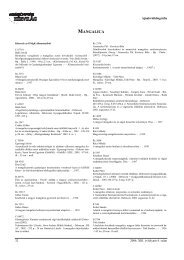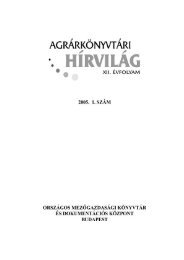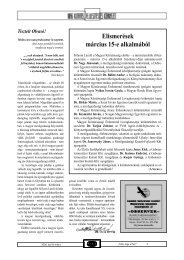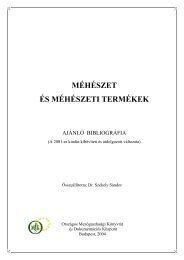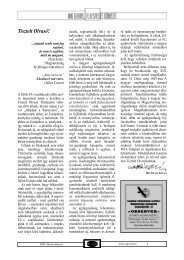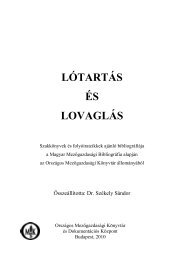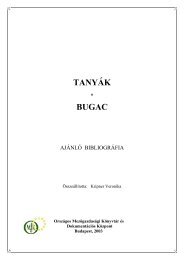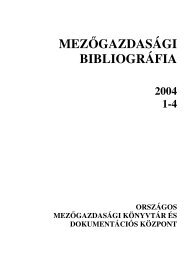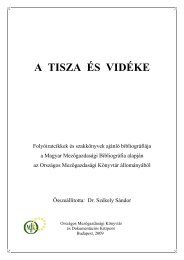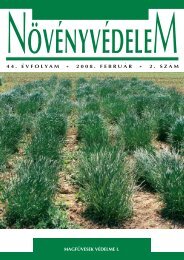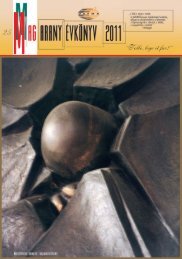hUNGARiAN AGRicUltURAl RESEARch
hUNGARiAN AGRicUltURAl RESEARch
hUNGARiAN AGRicUltURAl RESEARch
Create successful ePaper yourself
Turn your PDF publications into a flip-book with our unique Google optimized e-Paper software.
16 000<br />
14 000<br />
SALES VOLUME<br />
12 000<br />
10 000<br />
8 000<br />
6 000<br />
4 000<br />
Alcoholic Drink<br />
2 000<br />
Fit for B_P from ARI<br />
MA, MOD_8 CON<br />
0<br />
1<br />
13<br />
25<br />
37<br />
49<br />
,<br />
,<br />
MONTH<br />
Figure 2: Forecast of the Alcoholic Drink, Model: SARIMA (2, 1, 2) (0,1 2,0)<br />
and between the innovation<br />
parameter and the time interval in<br />
the case of both regression<br />
methods. I have not read about<br />
these types of significant correlations<br />
in the scientific publications<br />
yet, but I can show this relation on<br />
simulated time series as well.<br />
NLLS regression gave 75%<br />
lower values in average for the<br />
innovation parameter, quite the<br />
same (97% in average) for the<br />
imitation parameters then OLE<br />
regression and 3–8% greater<br />
values for the estimated potential<br />
market size. (Not regarding the<br />
yearly time series – OLE resulted<br />
very bad fitting on yearly data:<br />
R 2 =0.27) NLLS regression gave<br />
better quality of fitting according<br />
to the square of the Pearson<br />
product moment correlation<br />
coefficients of the fittings<br />
(R 2 =0,76 on average contrary to<br />
the R 2 =0,69 average value of the<br />
OLE regression).<br />
Results inspire the importance<br />
of the reference of the scale of the<br />
time series and the regression<br />
method in publishing the Bass<br />
parameters to compare Bass<br />
parameters of different products<br />
and the diffusion process in<br />
different countries.<br />
The stochastic SARIMA (2, 1,<br />
2) (0,1 2,0) gave the best fitting<br />
(R 2 =0.85577). The purchase of the<br />
previous month had an increasing<br />
effect on the amount of the<br />
purchase of the current month, but<br />
the pre-previous had a regressive<br />
one as >0 and



